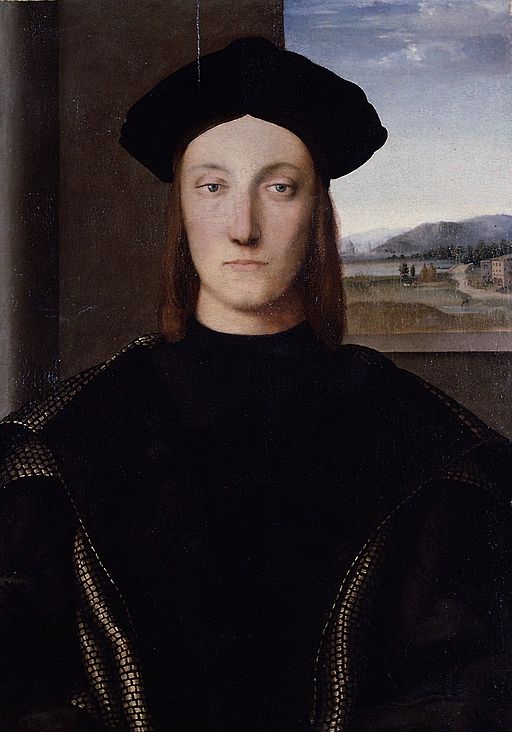Born on 17th January 1472, Guidobaldo I della Rovere was a pivotal figure in Italian Renaissance politics. He became the Duke of Urbino in 1482, succeeding his father, Federico III da Montefeltro, a renowned military leader and patron of the arts.
Despite his illustrious lineage, Guidobaldo’s reign faced numerous challenges, including political upheaval and personal health issues.
The court of Guidobaldo
Guidobaldo married Elisabetta Gonzaga, the sister of Francesco II Gonzaga, Marquis of Mantua, but they never had any children. His court at Urbino was one of the most refined and elegant in Italy, where literary men were known to congregate. The writer Baldassare Castiglione painted an idyllic picture of it in his Book of the Courtier , Il Libro del Cortegiano). Castiglione’s book, Il Libro del Cortegiano, was written in the form of an imaginary dialogue between Elisabetta Gonzaga and her guests and provides a unique picture of court life at the time. It was published in 1528, the year before he died.
Castiglione, related on his mother’s side to the Gonzaga family of Mantua, represented them diplomatically. As a result, he met Guidobaldo and later took up residence in his court among the many distinguished guests.
During this time, Castiglione also became a friend of the painter Raphael, who painted a portrait of him that is now in The Louvre in Paris. Raphael also painted a portrait of Guidobaldo, which is housed in the Uffizi in Florence.
The Duke’s health issues did not prevent him from making significant contributions to Urbino’s cultural and political life. Under his leadership, Urbino continued to flourish as a centre of Renaissance art and learning. Guidobaldo maintained the court’s tradition of patronising artists, scholars, and writers.
Military history
Guidobaldo fought as a captain on behalf of Pope Alexander VI alongside the French troops during the invasion of southern Italy by King Charles VIII of France. As a condottiero (mercenary military leader), he was later hired by the Republic of Venice to fight against Charles.
At one point, he was taken prisoner but was freed after a few months. He had to flee from Urbino in 1502 to escape the armies of Cesare Borgia, the Pope’s son, but was able to return in 1503 after the Pope died.
Guidobaldo’s rule began during a tumultuous period marked by the shifting alliances of Italian city-states. His early reign saw him aligning with Naples and the Papal States, which were key players in the intricate political landscape. However, his tenure was marred by recurring bouts of illness, which often incapacitated him.
Successor to Guidobaldo
Guidobaldo’s inability to produce an heir led to the designation of his nephew, Francesco Maria I della Rovere, as his successor. Francesco Maria, born to Guidobaldo’s sister Giovanna and Giovanni della Rovere, was groomed for leadership from a young age. Upon Guidobaldo’s death in 1508, Francesco Maria inherited the dukedom, ensuring the continuation of the della Rovere family’s influence in Urbino. In 1509, he married Eleonora Gonzaga.
Francesco Maria I della Rovere’s succession marked the beginning of a new chapter for Urbino. His rule was characterised by military campaigns and efforts to consolidate power amidst the ongoing conflicts of the Italian Wars.




![On This Day in History: The Battle of Molinella, 1467 The Battle of Molinella - La battaglia della Riccardina [1467]. Affresco nel Castello di Malpaga, già di Bartolomeo Colleoni. By Giorces - Own work, CC BY-SA 2.5 it, https://commons.wikimedia.org/w/index.php?curid=770054](https://italynews.online/wp-content/uploads/2025/07/960px-Malpaga5-300x300.jpg)

